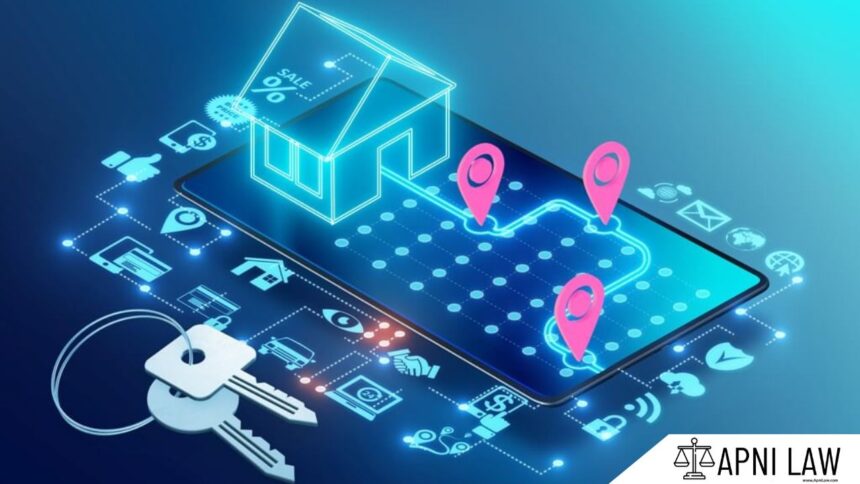Cybercrimes are rapidly increasing in the digital age. Criminals use advanced tools to steal hidden digital property like crypto wallets, NFTs, and sensitive data. Many also send offensive or threatening messages online, causing emotional harm. These actions violate cyber laws and threaten digital safety.
The Information Technology (IT) Act plays a crucial role in combating cybercrimes such as theft of digital property, data breaches, and online fraud. Section 66 provides a legal framework for the protection of digital assets and punishes unauthorized access, hacking, and data theft. Section 66 empowers authorities to investigate and penalize cyber offenders, ensuring a safer digital environment for individuals and businesses.
What Is Section 66 of the IT Act?
If a person dishonestly or fraudulently performs any act listed under Section 43 of the IT Act, they face strict penalties. The punishment includes imprisonment for up to three years, a fine up to five lakh rupees, or both.
“Dishonestly” follows the definition given in Section 24 of the Indian Penal Code (IPC).
“Fraudulently” carries the meaning defined in Section 25 of the IPC.
Popular Case
State of Tamil Nadu vs. Suhas Katti (2004): India’s First Cyber Crime Conviction
The State of Tamil Nadu vs. Suhas Katti (2004) marked India’s first-ever conviction under the Information Technology (IT) Act. This landmark case set the tone for future cybercrime investigations and legal procedures in India.
Suhas Katti, the accused, was a disgruntled acquaintance of the victim, a woman who had previously rejected his proposal. After the rejection, Katti began harassing her online. He posted obscene and defamatory content in a Yahoo chat group, falsely using the victim’s identity.
The authorities booked Katti under Section 66 of the IT Act, which deals with hacking and online offenses, and also under sections of the Indian Penal Code (IPC) for harassment and defamation.
The Chennai Cyber Crime Cell acted quickly. They collected digital evidence, including IP addresses and chat logs, and successfully tracked down the accused. The case moved swiftly through the legal system.
In 2004, the court found Suhas Katti guilty. He received punishment under Section 66 of the IT Act and relevant IPC provisions. This conviction was the first under India’s IT Act and came within seven months of the complaint being filed.
What Is Section 66A of the IT Act?
Section 66A of the IT Act penalized sending offensive messages through digital means. It targeted those who misused computers or communication devices to harm others.
Anyone using a computer or communication device to do the following could face punishment.
Send information that is grossly offensive or has a menacing tone.
Share false information, knowing it’s false, with the intent to annoy, insult, intimidate, or provoke enmity or hatred, especially if done repeatedly.
Send emails or messages to deceive, mislead about the sender’s identity, or cause annoyance or inconvenience.
The law allowed for imprisonment up to three years and a fine for offenders.
The term “electronic mail” included any message created, sent, or received through a computer or device. It covered text, images, audio, and video attachments.
Why section 66A of the IT Act Has Been Strike Down?
Supreme Court Strikes Down Section 66A: Under the Indian Penal Code (IPC), threatening someone with injury through email could lead to two years of imprisonment. The IT Act raised this penalty to three years. However, the law became controversial due to its broad and vague terms.
In the same year, lawmakers proposed a Private Members’ resolution to amend Section 66A. The resolution aimed to align Section 66A with Fundamental Rights.
Limit its scope to private communication.
Clearly define what constitutes an offence.
Reduce the penalty and make it a non-cognizable offence.
Despite these proposals, both the Bill and the resolution were eventually withdrawn.
Meanwhile, a Public Interest Litigation (PIL) challenged the provision. In February 2015, the Supreme Court confirmed it would test Section 66A’s constitutional validity. The government argued that the law was meant to tackle cybercrime, not suppress free speech.
The Court examined concerns over police powers. Critics argued that allowing police to decide what content is “abusive” or “annoying” gave too much discretion without judicial oversight.
This was concerning, as the law was cognizable and carried a minimum three-year sentence.
Another major flaw was the lack of clarity. Terms like “grossly offensive” remained undefined, increasing the risk of misuse and excessive litigation.
Although the judgment is not yet publicly available, the Supreme Court has struck down Section 66A. The final reasoning will shed light on how the Court weighed free speech against the need for cybercrime regulation.
What Is Section 66B of IT Act?
Section 66B of the Information Technology Act, 2000 deals with handling stolen digital property. It punishes anyone who dishonestly receives or keeps a stolen computer resource or communication device.
If a person knows or has reason to believe that the device or data is stolen, they are liable for punishment.
The offender may face imprisonment up to three years, fine up to one lakh rupees or both
Popular Case On Section 66B OF the IT Act?
Pegasus Spyware Case: Rupesh Kumar Singh & Ispa Shatakshi vs. Union of India (2023)
In 2023, journalists Rupesh Kumar Singh and Ispa Shatakshi filed a petition against the alleged use of Pegasus spyware on their devices. The case raised serious concerns about digital privacy, surveillance, and the misuse of cyber tools in India.
The petitioners argued that the installation of Pegasus spyware on their phones violated Section 66B of the Information Technology (IT) Act. This section criminalizes the dishonest receipt of stolen computer resources or communication devices.
They claimed Pegasus unlawfully accessed their personal data, making the surveillance not just unethical but also illegal.
The petitioners further stated that Pegasus use exceeded the legal boundaries set by Section 69 of the IT Act. This section allows lawful interception under strict conditions and only with proper government authorization.
The case also highlighted a breach of fundamental rights under the Constitution. The petitioners argued that unauthorized surveillance using Pegasus infringed on their right to privacy, freedom of speech, and press freedom.
The spyware accessed sensitive personal and professional data, affecting not only the individuals but also democratic values.
This case brought national attention to the issue of digital surveillance. It sparked debates on government accountability, data protection laws, and the need for judicial oversight in intelligence operations.
Conclusion
In conclusion, cybercrimes like digital theft and offensive messaging pose real risks. Users must secure their data and report online abuse. Stronger laws and awareness can reduce these threats. Stay alert and protect your digital world.










